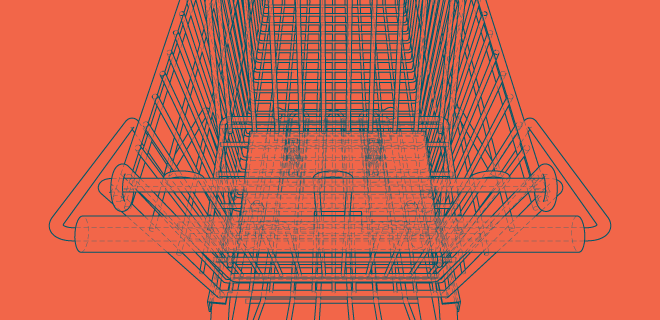
I began my career as an integrated media strategist at one of the Big 6 Agencies. “Integrated” meant I planned and bought TV, radio, print, OOH, and direct digital.
For digital, think homepage takeover of The New York Times or evergreen buys with relevant local publications—static 300x250s for the sites of newspapers where we’d bought space in the print version. Sounds archaic, I know.
My clients ranged from expensive home electronics to cloud computing software, to a San Francisco Bay Area-based group of hospitals. It was the hospital client that first exposed me to programmatic.
Given the restrictions on 1PD (e.g. no remarketing) for the industry, they wanted to innovate. We tried contextual, behavioral, and predictive targeting through Holdco’s trading desk. One of my colleagues at the time called the latter, “spray and pray”.
Once I had a taste of programmatic, I never looked back.
What’s measurable is what’s actionable, and it’s pretty tough to optimize a print buy. Thus, when I became a trader, work was never boring…but as privacy restrictions began to tighten, I had concerns that the digital media industry would no longer be data-driven, and I’d end up in the “integrated” media world again, where most buys were considered equally difficult to measure, and plans saw few changes quarter over quarter.
However, three opportunities currently give me hope as a buyer: Clean Rooms, Site-Side Analytics + CRM, and the Privacy Sandbox.
Clean Rooms
First-party data is unquestionably the most valuable and rich type of data for a marketer. Everyone wants it, but of course, not everyone has it.
It’s rare to find a brand that has a consistently refreshed set of data directly from their target audience and/or existing customers.
Marketers that do have these “golden doubloons” (quoting a former client) need to invest in one or more clean rooms. As my friend and former colleague, Myles Younger stated in a piece for AdMonsters last year, “A clean room can match my timestamped sales transaction records to your timestamped ad server logs and I get a report showing how many users appear in both data sets…along with the time lag between ad exposures and conversions. Voila! A basic attribution model!”
Once advertiser data is uploaded to the clean room, advertisers can see intersections between clean room data and platform data, giving them privacy-safe insights on various cuts of their audiences.
Another favorite client quote of mine is that they started their attribution journey—specifically moving away from a last touch attribution model across search, social and programmatic—by “trying to be less wrong.”
The crux of the challenge lies in the fact that within each of the aforementioned channels, silos inherently exist. It’s not enough to stand up Ads Data Hub; the vast majority of B2C marketers will need to invest time and resources into the nascent clean rooms from Facebook and Amazon as well.
However, Facebook and Amazon have done little to publicize their offerings. I’m hard-pressed to find a case study for either, and I believe Google does have an edge in this regard.
Site-Side Analytics + CRM
Marketers, you may not have call tracking or a lead-gen form, and perhaps you have additional restrictions due to the nature of your industry. But you do have a website, and most likely some form of 1PD from a CRM system.
I’d be remiss if I didn’t mention last week’s Google Analytics 4 release. Per their announcement, it’s privacy-centric by design and “uses multiple identity spaces, including marketer-provided User IDs and unique Google signals from users opted into ads personalization, to give you a more complete view of how your customers interact with your business.”
Whether the new iteration of Google Analytics will bring forth new opportunities to utilize their privacy sandbox remains to be seen—and I’ll address the privacy sandbox later on.
A couple of major caveats: in the post-GDPR and CCPA world, it’s unclear how valuable opted in user data is compared to the data sets of days past. I urge marketers to study the data and see if there are extreme anomalies between the new normal and their historical data, as this can help them decide whether the insights are statistically significant, let alone valuable and actionable.
Some have posited that CRM is an ideal cookieless alternative but again, it’s likely a small data set with inherent data freshness issues.
MediaPost stated in June that “An estimated 30% of CRM record data becomes inaccurate during a one-year time span based on customers moving their physical address, adding an email address or changing their phone number.”
Privacy Sandbox
Per Google’s Chromium blog, “In order to transition the web to a more privacy-respecting default, it is incumbent upon us to replace that functionality as best we can with privacy-conscious methods.”
This sounds great, however, I’m hard-pressed to find a Privacy Sandbox case study (yet). I frequently rely on the IAB to demystify and provide objective updates on these types of emerging technologies, so dear reader, I encourage you to read their post “Explaining the Privacy Sandbox Explainers”.
Major caveat: Google’s antitrust legal battles may slow down or change the course of this mission. And it’s not just Google who is impacted: as Kara Swisher called them, the “4 Horsemen of the Techopolypse”: Google, Amazon, Facebook, and Apple—are all taking part in these Congressional proceedings.
What’s Next?
While advances in digital media capabilities seem to move at lightning speed compared to other media types like TV, radio, and print, the move to a cookieless world and continually restricted data usage is slow going and the next steps are uncertain.
It’s an exercise in futility to try and predict which technologies will go away, and when. As always, marketers need to plan for a broad range of potential outcomes as it relates to their access to data whether it’s 1P, 2P, or 3P.
Easier said than done, but par for the course in this chaotic 2020.